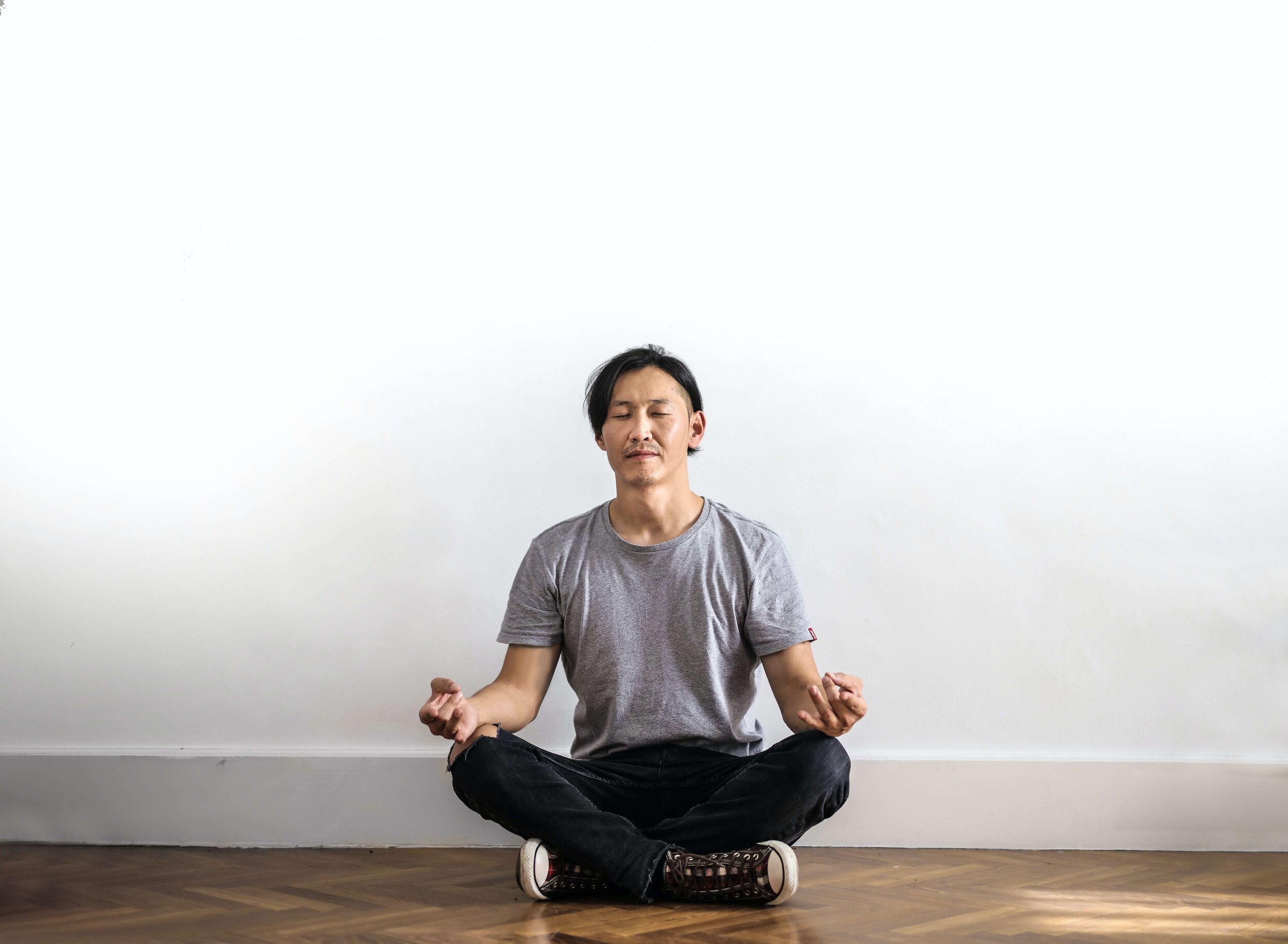What Is The Mindful Attention Awareness Scale (MAAS)?
☕ Have you ever found yourself guzzling your way through a barista-made latte and then lifted the cup to your lips to find that you’ve disappointingly already finished it?
🌹 Do you sometimes find yourself rushing off on foot through your favorite city park and somehow forgotten to take in the beautiful scenery along the way?
🤔 Or have you ever been in conversation with one of your friends when they ask you a question and you realize you haven’t been listening to a single thing they’ve said?
Not to worry - we’ve all caught ourselves unconsciously headbutting our way through life at one point or another.
It’s a normal thing to do when we are busy or stressed, we are already worrying about what’s coming next rather than taking in what is happening around us.
If this sounds like you, perhaps it would be to your benefit to understand what the Mindfulness Attention Awareness Scale (MAAS) is.
Let me explain why.
What Is The Mindful Attention Awareness Scale?
The MAAS measures our levels of mindful states over time.
Since mindfulness is linked with overall happiness, psychologists wanted to create a way to measure a person’s mindfulness over time in hopes of developing better treatment plans for their patients. The scale is based on a 1 through 6 Likert scale of a 15 item questionnaire.¹ The scale measures mindfulness and consciousness through self-regulation, self-discipline, personality, and well-being.
While this varies from person to person, the MAAS gives a clear picture of where a person’s mental health stands in terms of mindfulness.
The good news is that mindfulness is a skill and some individuals are shown to be more proficient at it than others. MAAS also details that with practice at focusing our concentration, we can develop this skill and become better at it.
Who Created The Mindful Attention Awareness Scale?
The researchers and authors behind the MAAS are Kirk Warren Brown, an associate professor at Virginia Commonwealth University, and Richard M Ryan, a professor at the Australian Catholic University in North Sydney.
Both Brown and Ryan are interested in the study of mindfulness, self-determination, and positive psychology. As they continue their research and gain further knowledge, the entire Psychological community gains further insight into how mindfulness impacts the human psyche.
Where Can I Find The MAAS Questionnaire?
You can find the MAAS questionnaire online and even complete the questionnaire for yourself. Simply score your answer from 1 to 6, whichever is most relevant.²
How Is The MAAS Scored?
To score your results of the MAAS questionnaire, simply find the mean of the 15 questions you score.
Answer each question, choosing an option from 1 to 6 as is most relevant to you
At the end of the questionnaire, add up all of your scores
Divide the total score by 15
The result is your final score with a higher score indicating that you are generally more mindful
So what is a “good” score?
It’s not totally clear whether or not there is a “good” score that people can aspire to. But it’s helpful to see how other people are scoring just so that you have some kind of reference point.
Interestingly, cancer patients are more mindful than adults without cancer. Zen meditators are the most mindful of all groups studied (unsurprisingly) and undergraduate students are the least mindful (also unsurprisingly).
As you can see, those who actively took part in mindfulness practices, the Zen meditators, had a mean score higher than those of the other groups. And according to the working theory behind this scale, Zen meditators are better equipped at managing life than any other group in the study.
How You Can Incorporate Mindfulness Into Your Life
The best way to practice mindfulness is to try reminding yourself throughout your day to tune in and concentrate fully on whatever it is you are doing in that present moment.
How?
Here are a few ways to get started.
Start Small
Many people make the mistake of trying to completely rewire their brains to be conscious all of the time at every given moment. While this may be the goal, it is a very hard thing to do. Instead of tackling every moment at once, start small. Invite mindfulness into those moments when you are most likely to get distracted, give in to overwhelm, or say something you’ll regret in frustration.
Try This:
Perhaps choose a moment when you are most relaxed, like cooking dinner in the evenings. As you begin to prepare your food be conscious of every cut you make and every breath you take.
Or you can give it a try by listening to your favorite music, carefully listening to every word or beat.
Learn how to practice mindfulness while using the most addictive apps on your phone
Make a Routine
Once you’ve chosen one of your favorite activities that you identify as the easiest to concentrate completely on, make this a pattern or routine. Practice it every day or as often as you can. Before you know it, you’ll be doing it habitually and the longer you practice the easier it will become.
Try This:
Set a timer to go off periodically throughout the day. When the alarm bell sounds, pause and reflect on your current experience. Notice the sensations that you are feeling and the movements of your own body in that moment. Notice the movements of the environment around you.
Use Curiosity to Focus Your Attention
Curiosity is a great way to tune into a moment or experience you are having. When we are curious, we ask questions and observe as much as we can to answer them. If you think about it, it’s very hard to be stressed, frustrated, or angry when you are being curious. In fact, curiosity can sometimes help us to clear our heads and gain a little clarity.
Try This:
Go outside and get close to the ground. Observe the details of the grass, the bugs, the rocks, and everything in between. Be curious about their world and how they function in it.
Listen carefully to your environment and notice any sounds that you weren’t expecting or hadn’t noticed before. Close your eyes and imagine where they are coming from and what it takes to make that sound.
Practice Breath Awareness
Breathing, especially deep breaths, is the key to mindfulness. Deep breathing helps us relax, it tells our bodies and mind that we are not under threat and that everything is just as it should be. If you think about it, if we are constantly taking short sharp breaths it’s telling our bodies that we are in a state of stress and we need to be ready to run or fight.
Try This:
Try pranayama breathing, which offers a scripted practice from breathing exercises.
Sit up straight with your bum firmly rooted on the ground. Close your eyes and slowly inhale through your nose. In your head, count slowly as you inhale. When your lungs are filled to the top, hold your breath for one full second and then slowly exhale, counting to the same number that you got to when inhaling. Repeat five times.
Be Gentle With Yourself
If you’re having a bad day or an off moment, don’t beat yourself up about it. Be gentle with yourself instead. Reflect on why you may be finding it particularly hard to concentrate today. You don’t have to find an answer, just by reflecting you are bringing awareness and this can help to settle your mind and body. Perhaps remind yourself that forgiveness can be offered to ourselves just as you can offer it to anybody else.
Try This:
The next time you’re in a bad mood, find a quiet space to sit and reflect. Take a few deep breaths and observe where you “feel” your bad mood. Following it in your mind, being open and curious about where it came from. Maybe you’ll find an answer, maybe you won’t. Taking time to reflect on your mood and reactions is a powerful tool in learning to become mindful.
Bring Yourself Back to the Present Moment
As often as you can, remind yourself that all that is important right now is now. And as easy as it is to get caught up in the stress or frustration of one situation or another, it’s always much easier to tackle whatever it is with a calm mind rather than a stressed and frazzled one.
Try This:
When you’re feeling stressed or frazzled, take a deep breath. Say out loud, “I am exactly where I need to be.”
Final Thoughts
Every moment is precious: It is only ever offered to us once.
Take some time to develop a mindfulness practice and you will not only become more present in this life - you’ll also enjoy it more, too.
Try using the Mindfulness Attention Awareness Scale to gauge where you’re at. We can all improve and mind more joy in our lives if we really try.
With a little self-discipline and focus, there is no limit to how good you can feel.
-
Hollis-Walker, Laurie, and Kenneth Colosimo. “Mindfulness, Self-Compassion, and Happiness in Non-Meditators: A Theoretical and Empirical Examination.” Personality and Individual Differences 50, no. 2 (January 1, 2011): 222–27. https://doi.org/10.1016/j.paid.2010.09.033.
“Mindful Attention Awareness Scale | Positive Psychology Center,” n.d. https://ppc.sas.upenn.edu/resources/questionnaires-researchers/mindful-attention-awareness-scale.






